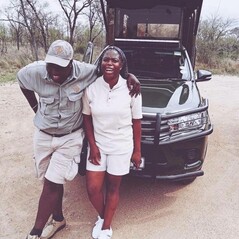- The place we will go to is on the hills of Magaliesberg, we will get there in about 1 hour by car from Johannesburg. This is a fairly young museum by historical standards – the village began to receive its first visitors in 1995.
- The museum contains the culture, traditions and legends of various African peoples, including, for example, the Zulu people, a warlike nation and the largest ethnic group in South Africa. Tney live mainly in the KwaZulu-Natal region. Their unique huts can be compared externally to wasp hives.
- Another group of people is Kosa, originally from the southeast of South Africa. They are engaged in various crafts, embroider with beads, weave fabrics and engage in pottery. Their national houses are white thatched buildings with beautiful patterns on their walls.
- The Pedi Nation is known for being part of the ruling elite that once ruled many peoples in Northern Sotho in the 18th century. They are very talented musicians and dancers.
- The mountain nation, the Basotho, is an ancient people who were one of the first to settle Lesotho. They are famous for their colorful blankets and straw hats.
- The people close to art are called Ndebele – a group of tribes and nationalities living in Zimbabwe and South Africa. Their outlandish huts stand out for their beauty, and their tribal dances will not leave you indifferent.
- In the village, you can also explore local frescoes, and a multimedia presentation will tell you all about the thorny historical path of the South African peoples.
- Included: entrance fees, transfer, guide, water and snacks.
- Please bring your camera to capture the moment however if it happens that you forgot your camera I have a cool digital camera to capture the moment and I will be happy to email you the pictures.
Meet Emmah - Member of guides team

Hello, I'm Emmah, Team of guides from Johannesburg
I live in Johannesburg
I speak: English
Hello! I’m a tour guide from Johannesburg. I will be glad to show you the most interesting sights of my country!
I will be happy to meet with you and conduct any of my Experiences.






